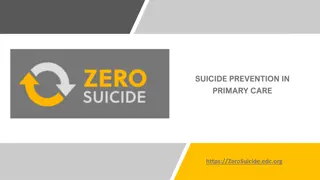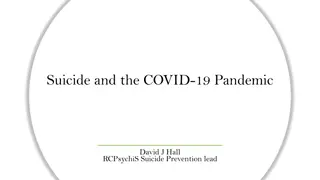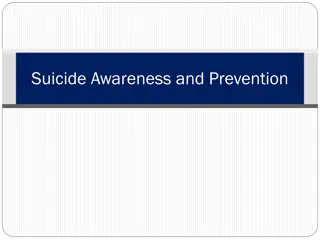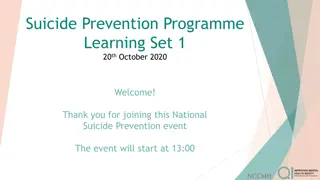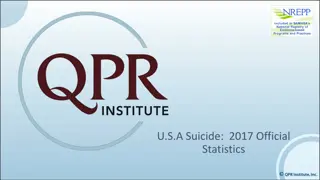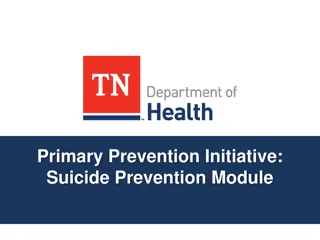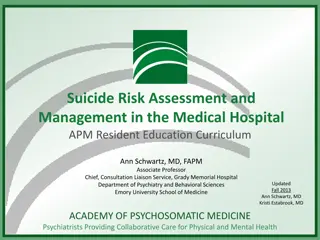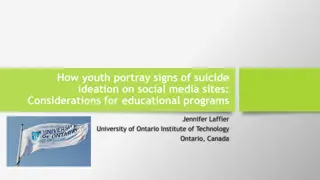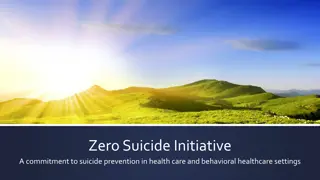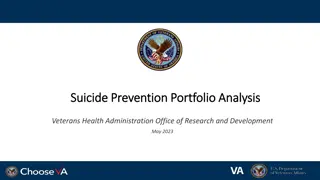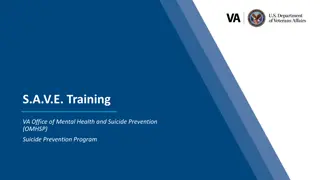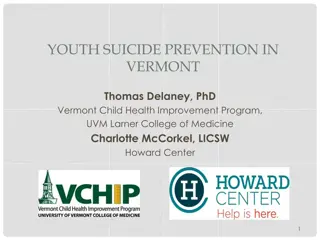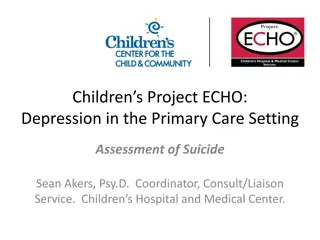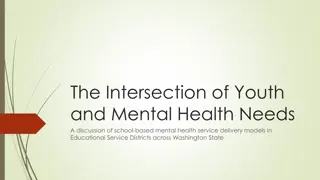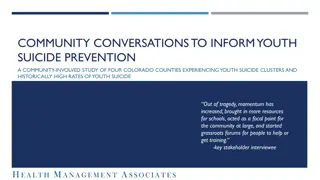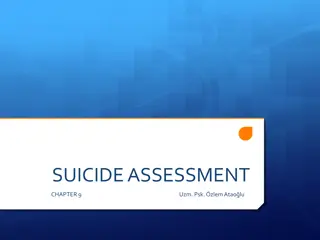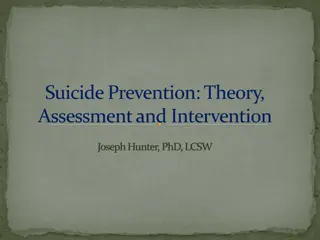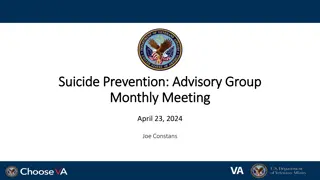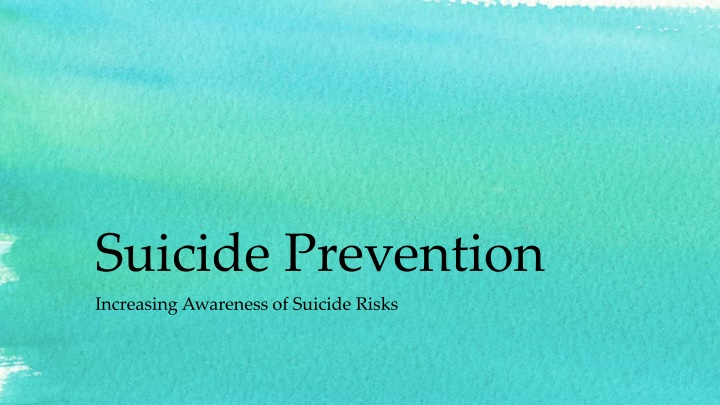
Suicide Risks and Prevention Measures
Increase awareness of suicide risks and prevention strategies through recognizing warning signs, risk factors, and protective factors. Learn how to identify signs of suicidal behavior and ways to support individuals at risk. Discover valuable resources to prevent suicide effectively.
Download Presentation

Please find below an Image/Link to download the presentation.
The content on the website is provided AS IS for your information and personal use only. It may not be sold, licensed, or shared on other websites without obtaining consent from the author. If you encounter any issues during the download, it is possible that the publisher has removed the file from their server.
You are allowed to download the files provided on this website for personal or commercial use, subject to the condition that they are used lawfully. All files are the property of their respective owners.
The content on the website is provided AS IS for your information and personal use only. It may not be sold, licensed, or shared on other websites without obtaining consent from the author.
E N D
Presentation Transcript
Suicide Prevention Increasing Awareness of Suicide Risks
Suicide Prevention Suicide is Preventable Data on Suicide Rate Who is at risk? The warning signs What could we do to prevent suicide? Protective Factors Resources available
Prior attempts Depression and other mental health disorders Substance abuse or disorder Family history: Suicide or suicidal attempts Mental disorders Substance abuse or disorder Risk Factors Family violence Physical or sexual abuse Who is at Risk for Suicide?
Family discord relationship between parents relationship with parents Being exposed to suicidal behavior or attempt The presence of guns or other firearms in the home Victims of Bullying LGBTQ students Risk Factors Who is at Risk for Suicide? Source: National Institute of Mental Health, US Department of Health and Human Services.
Important signs may include: Threatening to hurt or kill themselves Seeking access to pills, weapons, or other means to hurt themselves Talking or writing about death, dying, or suicide Expressing hopelessness, no reason for living, or having no sense of purpose Warning Signs Having rage, anger, or seeking revenge How to tell whether a young person is suicidal Acting recklessly or engaging in risky behaviors Feeling trapped Source: Youth Mental Health First Aid USA publication, 2012.
Important signs may include: Increasing alcohol or drug use Withdrawing from friends, family, and society Dramatic change in mood (extreme shift) Change in sleep pattern (sleeping all the time or not being able to sleep) Warning Signs Being anxious or agitated Giving away prized possessions How to tell whether a young person is suicidal Saying goodbyes or saying sorry Source: Youth Mental Health First Aid USA publication, 2012. Dramatic change in appearance: hygiene, clothing
Protective Factors are areas that contribute to resiliency: including strong family and social supports, and the natural ability of youth and children to adapt to new situations. Parental and family support Having a good social support system/support circle Spirituality Helping a young person build resiliency Community involvement Consistent home/family routine Regular school attendance The Protective Factors Encouraging healthy practices: exercise, sports, healthy diet Monitoring youth activities Source: Youth Mental Health First Aid USA publication.
Call 9-1-1 for Emergency PERT Unit: Provides emergency assessment and referral for individuals with mental illness who come to the attention of law enforcement through phone calls from community members or in-field law enforcement request for emergency assistance. PERT pairs licensed mental health clinicians with uniformed law enforcement officers/deputies. Clinicians work out of individual law enforcement divisions and respond in the field with their law enforcement partners. The PERT team evaluates the situation, assesses the individual's mental health condition and needs, and, if appropriate, transports individual to a hospital or other treatment center, or referees him/her to a community-based resource or treatment facility. What to do when in crisis 9-1-1 for Emergency Please know that there is a limited number of PERT Team Members. They work certain hours per week at different jurisdictions throughout San Diego County.
For non-emergency, call your local police department: (619) 531-2000 San Diego Police Department (858) 565-5200 County San Diego Sheriff Department (619) 522-7350 Coronado Police Department (619) 336-4411 National City Police Department (619) 579-3311 El Cajon Police Department (619) 667-1400 La Mesa Police Department (619) 691-5151 Chula Vista Police Department (760) 435-4900 Oceanside Police Department (760) 839-4722 Escondido Police Department (760) 931-2197 Carlsbad Police Department What to do when in crisis 9-1-1 for emergency
NIH Suicide in America: FAQ National Suicide Prevention Lifeline 1-800-273-TALK (8255). 24 hours/7 days a week free service County of San Diego Quick Reference Guide to Services Community Resources National Alliance on Mental Illness (NAMI) Recovery Support Group Family Support Group Resources available in our area NIMH Mental Health Resources

